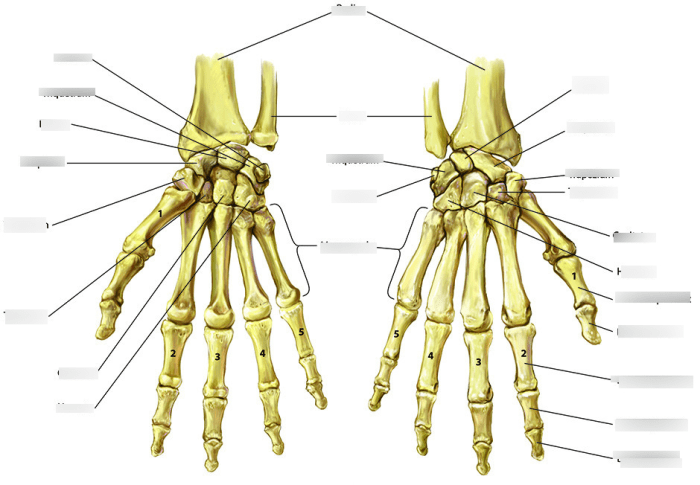Embark on a mathematical adventure with Math Models Unit 7 Quiz 1! This comprehensive guide unlocks the secrets to conquering this assessment, empowering you with the knowledge and strategies to excel.
Delve into the intricacies of mathematical concepts, problem-solving techniques, data analysis, and more. Prepare yourself for the quiz format and structure, and discover effective study tips to maximize your performance.
Math Models Unit 7 Quiz 1 Overview
This quiz assesses your understanding of key concepts and applications of mathematical models in various fields, including biology, physics, and economics. It aims to evaluate your ability to analyze and interpret mathematical models to solve real-world problems.
The quiz covers the following topics:
- Exponential and logarithmic functions
- Systems of linear equations
- Matrices
- Differential equations
- Applications of mathematical models in different fields
Purpose and Objectives
The purpose of this quiz is to:
- Assess your comprehension of the fundamental principles of mathematical modeling.
- Evaluate your ability to apply mathematical models to practical situations.
- Provide feedback on your progress in the Math Models Unit 7 course.
Mathematical Concepts and Applications

The quiz covers a range of mathematical concepts with practical applications in various fields.
These concepts provide the foundation for solving real-world problems, making informed decisions, and understanding the underlying patterns in data.
Linear Equations
Linear equations represent a fundamental concept in algebra and are widely used in modeling real-world phenomena.
They describe relationships between variables that can be represented as straight lines on a graph.
Applications of linear equations include:
- Calculating distances and rates
- Predicting future values based on historical data
- Balancing chemical equations
- Solving word problems involving proportions and ratios
Systems of Linear Equations
Systems of linear equations involve multiple linear equations that are solved simultaneously.
Math Models Unit 7 Quiz 1 was quite challenging, but I managed to pass. I’m currently reviewing Spanish 2 Module 1 DBA materials to prepare for the upcoming assessment. After completing the Spanish DBA, I’ll be revisiting Math Models Unit 7 Quiz 1 to reinforce my understanding of the concepts.
They are used to model complex relationships between multiple variables.
Applications of systems of linear equations include:
- Solving problems involving mixtures and blends
- Finding the intersection point of two or more lines
- Solving systems of equations arising in economics, physics, and engineering
Matrices
Matrices are rectangular arrays of numbers that represent linear transformations and systems of equations.
They are used to simplify and solve complex mathematical problems.
Applications of matrices include:
- Representing and manipulating data in computer graphics
- Solving systems of linear equations efficiently
- Analyzing data in statistics and machine learning
Linear Programming
Linear programming is a technique used to optimize decisions involving linear functions and constraints.
It is used to find the best possible solution to problems with multiple variables and objectives.
Applications of linear programming include:
- Maximizing profits in business
- Minimizing costs in production and logistics
- Scheduling resources efficiently
Problem-Solving Strategies

Mastering the art of problem-solving is crucial for excelling in this quiz. Let’s delve into the strategies that will empower you to conquer any question that comes your way.
When approaching different types of questions, remember to:
- Read carefully:Understand the question thoroughly before attempting to solve it.
- Identify key concepts:Pinpoint the mathematical concepts being tested and the relationships between them.
- Visualize the problem:Draw diagrams, tables, or graphs to represent the situation and simplify the problem.
- Break down the problem:Divide complex problems into smaller, manageable steps.
- Use formulas and theorems:Recall and apply relevant mathematical formulas and theorems to solve the problem.
- Check your work:Once you have a solution, double-check your calculations and reasoning to ensure accuracy.
Tips for Efficient Problem-Solving
- Practice regularly:Engage in consistent practice to enhance your problem-solving skills.
- Learn from mistakes:Analyze your incorrect solutions to identify areas for improvement.
- Collaborate with others:Discuss problem-solving strategies and solutions with peers or instructors.
- Stay organized:Maintain a neat and well-organized workspace to minimize distractions.
- Manage your time:Allocate time wisely during the quiz to ensure you complete all questions.
Data Analysis and Interpretation: Math Models Unit 7 Quiz 1
In this quiz, your ability to analyze and interpret data will be tested. This involves understanding the different types of data, being able to summarize and present data in a meaningful way, and being able to draw conclusions from the data.
To analyze data effectively, you need to first understand the different types of data. There are two main types of data: qualitative data and quantitative data. Qualitative data is data that is not in numerical form, such as text, images, or videos.
Quantitative data is data that is in numerical form, such as numbers or measurements.
Once you have identified the type of data you are working with, you can begin to summarize and present the data in a meaningful way. There are a number of different ways to do this, including using tables, charts, and graphs.
The best way to present the data will depend on the type of data you have and the purpose of your analysis.
Once you have summarized and presented the data, you can begin to draw conclusions from the data. This involves looking for patterns and trends in the data and making inferences about what the data means. When drawing conclusions from the data, it is important to be careful not to overinterpret the data or to make claims that are not supported by the data.
Common Data Analysis Methods
- Descriptive statistics: This involves summarizing the data in a way that makes it easy to understand. Descriptive statistics include measures of central tendency (such as mean, median, and mode) and measures of variability (such as range, variance, and standard deviation).
- Inferential statistics: This involves using the data to make inferences about a larger population. Inferential statistics include hypothesis testing, confidence intervals, and regression analysis.
- Data visualization: This involves using charts and graphs to represent the data in a way that makes it easy to see patterns and trends. Data visualization techniques include bar charts, line charts, scatterplots, and histograms.
Applications of Data Analysis
Data analysis is used in a wide variety of fields, including business, finance, healthcare, and social science. In business, data analysis is used to make decisions about marketing, product development, and customer service. In finance, data analysis is used to make decisions about investments and risk management.
In healthcare, data analysis is used to make decisions about patient care and treatment. In social science, data analysis is used to understand human behavior and social trends.
Quiz Format and Structure

The Math Models Unit 7 Quiz 1 is designed to assess your understanding of the mathematical concepts and problem-solving strategies covered in the unit. The quiz consists of a variety of question types, including multiple-choice, short answer, and problem-solving questions.
You will have a time limit of 60 minutes to complete the quiz.
Number of Questions and Question Types
The quiz contains a total of 25 questions. The question types are as follows:
- Multiple-choice questions (10 questions)
- Short answer questions (5 questions)
- Problem-solving questions (10 questions)
Unique Features and Requirements, Math models unit 7 quiz 1
There are no unique features or requirements for this quiz. However, you are encouraged to use a calculator to assist you with the problem-solving questions.
Preparation and Study Tips
To excel in Math Models Unit 7 Quiz 1, effective preparation is crucial. Here are some practical study tips to help you succeed:
Review Materials
- Review your lecture notes and textbooks thoroughly.
- Utilize online resources such as Khan Academy or Coursera for additional explanations.
- Complete all assigned practice problems and review their solutions.
Time Management
- Allocate sufficient study time and create a study schedule.
- Break down large study sessions into smaller, manageable chunks.
- Use a timer to track your progress and stay on schedule.
Exam-Taking Strategies
- Read the instructions carefully and manage your time wisely.
- Start with easier questions to build confidence.
- Show your work and clearly explain your reasoning.
- Review your answers thoroughly before submitting.
Question Bank
What are the key concepts covered in Math Models Unit 7 Quiz 1?
The quiz encompasses a range of mathematical concepts, including functions, derivatives, integrals, and probability distributions.
How can I effectively prepare for the quiz?
Thoroughly review the course material, practice solving problems, and utilize study resources such as practice tests and online tutorials.
What is the time limit for the quiz?
The time limit for the quiz varies depending on the specific assessment, so be sure to check the instructions carefully.